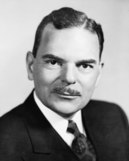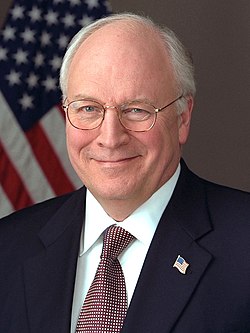19th century
1856
| Presidential nominee | 1856 (lost) | Vice presidential nominee | |
|---|---|---|---|
| John C. Frémont of CA (1813–1890)  |
|
| William L. Dayton of NJ (1807–1864) 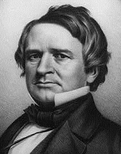 |
| Opponent(s) James Buchanan (Democratic) Millard Fillmore (Know Nothing) |
| Opponent(s) John C. Breckinridge (Democratic) Andrew Jackson Donelson (Know Nothing) | |
1860, 1864
| Presidential nominee | 1860 (won), 1864 (won) | Vice presidential nominee | |
|---|---|---|---|
| Abraham Lincoln of IL (1809–1865) 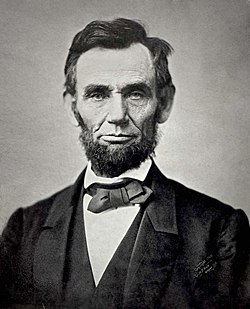 |
|
| Hannibal Hamlin of ME (1809–1891)  (1860) |
| Andrew Johnson of TN (1808–1875)  (1864) | ||
| Opponent(s) Stephen A. Douglas (Democratic) John C. Breckinridge (Southern Democrats) John Bell (Constitutional Union) |
| Opponent(s) Herschel Vespasian Johnson (Democratic) Joseph Lane (Southern Democrats) Edward Everett (Constitutional Union) | |
| Opponent(s) George B. McClellan (Democratic) |
| Opponent(s) George H. Pendleton (Democratic) | |
1868, 1872
| Presidential nominee | 1868 (won), 1872 (won) | Vice presidential nominee | |
|---|---|---|---|
| Ulysses S. Grant of IL (1822–1885)  |
|
| Schuyler Colfax of IN (1823–1885)  (1868) |
| Henry Wilson of MA (1812–1875)  (1872) | ||
| Opponent(s) Horatio Seymour (Democratic) |
| Opponent(s) Francis Preston Blair Jr. (Democratic) | |
| Opponent(s) Horace Greeley (Democratic) |
| Opponent(s) Benjamin Gratz Brown (Democratic) | |
1876
| Presidential nominee | 1876 (won) | Vice presidential nominee | |
|---|---|---|---|
| Rutherford B. Hayes of OH (1822–1893)  |
|
| William A. Wheeler of NY (1819–1887)  |
| Opponent(s) Samuel J. Tilden (Democratic) |
| Opponent(s) Thomas A. Hendricks (Democratic) | |
1880
| Presidential nominee | 1880 (won) | Vice presidential nominee | |
|---|---|---|---|
| James A. Garfield of OH (1831–1881)  |
|
| Chester A. Arthur of NY (1829–1886)  |
| Opponent(s) Winfield Scott Hancock (Democratic) James B. Weaver (Greenback) |
| Opponent(s) William Hayden English (Democratic) Barzillai J. Chambers (Greenback) | |
1884
| Presidential nominee | 1884 (lost) | Vice presidential nominee | |
|---|---|---|---|
| James G. Blaine of ME (1830–1893) 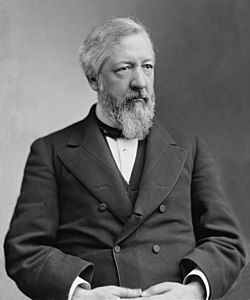 |
|
| John A. Logan of IL (1826–1886)  |
| Opponent(s) Grover Cleveland (Democratic) John St. John (Prohibition) Benjamin Butler (Greenback) |
| Opponent(s) Thomas A. Hendricks (Democratic) William Daniel (Prohibition) Absolom M. West (Greenback) | |
1888, 1892
| Presidential nominee | 1888 (won), 1892 (lost) | Vice presidential nominee | |
|---|---|---|---|
| Benjamin Harrison of IN (1833–1901)  |
|
| Levi Morton of NY (1824–1920)  (1888) |
| Whitelaw Reid of NY (1837–1912)  (1892) | ||
| Opponent(s) Grover Cleveland (Democratic) Clinton Fisk (Prohibition) Alson Streeter (Union Labor) |
| Opponent(s) Allen Thurman (Democratic) John Brooks (Prohibition) Charles Cunningham (Union Labor) | |
| Opponent(s) Grover Cleveland (Democratic) James Weaver (Populist) John Bidwell (Prohibition) |
| Opponent(s) Adlai Stevenson (Democratic) James Field (Populist) James Cranfill (Prohibition) | |
1896, 1900
| Presidential nominee | 1896 (won), 1900 (won) | Vice presidential nominee | |
|---|---|---|---|
| William McKinley of OH (1843–1901)  |
|
| Garret Hobart of NJ (1844–1899)  (1896) |
| Theodore Roosevelt of NY (1858–1919)  (1900) | ||
| Opponent(s) William Jennings Bryan (Democratic, Populist) |
| Opponent(s) Arthur Sewall (Democratic) Tom Watson (Populist) | |
| Opponent(s) William Jennings Bryan (Democratic, Populist) John Woolley (Prohibition) |
| Opponent(s) Adlai Stevenson (Democratic) Henry Metcalf (Prohibition) | |














